Pier
Senior Member
I'm attaching my latest synth experiment. It has 3 sections, A, B, and A+B.
This sounds great but.... it has no low end? I thought you wanted to create one of those sub basses

I'm attaching my latest synth experiment. It has 3 sections, A, B, and A+B.

Overall I think I completely failed taking control of the lowend of this track, it's all too muddy still. Listening to another example from Mick Gordon for comparison made that very clear to me:
When you listen to this from 1:55 to about 2:25 you can hear plenty of very tight bass sounds. To me that sounds like more than just layered kicks or one of those regular subharmonic synthesizers. Any idea how this is made? Is this something that might be achievable with triggering very (!) tight and short kick samples from a drum trigger that is fed a lowpassed detection signal?

As far as percussion you can do the same thing enforcer does a number of ways... Layering kicks underneath percussion, electronic kicks tend to do well, (A lot of trailer composers do this). You can use something like XLN's Addictive trigger or a similar drum replacer to trigger and add a kick or percussion layer... I tend to prefer a Kontakt patch of short punchy kicks I have, and copying MIDI, but a drum replacer on a duplicate track would do the job.
The trick is to use short kicks. Tight punchy kicks will get you a lot more mileage than long kicks, as the tails of the percussion and a long kick are bound to have a non-harmonic relationship, creating unpleasant frequency clashes... The kicks also tend to be centered higher, 70-100 Hz... This lets the deeper percussion and sub bass rule the stuff down around 40-50.
You can also add a small imperceptible delay to the percussion (5-10 ms) so the kick hits first. It's subtle, but the transients of the short kick will cut through a little better... (Depending on the track, there've been times where I've delayed everything but the percussion by just a few milliseconds so the percussion rides the mix. Totally depends on the track though of course..)
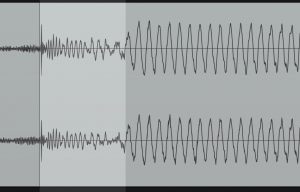
@MartinH. - The patch works best in the C0-C1 range, but it was thrown together rather quickly
Xfer LFO tool is useful for shaping low end via sidechain, you can get really precise and tight results with it.
You're right, I noticed that too when I uploaded it, but I thought layering another low sine in is easy and the thing about the sound that I found interesting wasn't in the lowend. You're asking very good questions though, and it had me thinking about this a lot the recent days. I've analyzed parts of the Doom Soundtrack through a different lense and gained some new insights from it:This sounds great but.... it has no low end? I thought you wanted to create one of those sub basses
You're right! Feel feel to digress any time, it's great food for thought. I think I was basically asking the wrong questions from the start more or less. I was fascinated by the energy and impact and thought I need more bass for that, but it's almost the opposite. When I listened to the Doom OST with a 200 hz highpass filter and compare to the same parts with a 200hz lowpass filter, I realized that Mick found ways to always make the highend support the lowend and also "describe" what's going on in the lowend in a way, that would be perfectly audible even on a tiny speaker. There's usually some kind of resonant distortion/excitation/whatever-it's-called on the deep bass synths, that extends them into the high frequency range and generates that bbbrrrRRRRZZZZzzzttt sound that I asked about before in another thread. And the lowend is just super tightly organized with lots of breaks to let you breathe and create contrast.It's not only about mixing, but about the sonic intention. You're looking for that tight low end, right? That's just as important IMO as finding the right chords and writing the proper arrangement to evoke... something. Ah, I don't know, I'm digressing.
Tried to make an impression of that. Check the attached mp3.
What I hear is a lot of mid-low mid presence with maybe rolled off highs. It sounds somewhat dry with a tighter foundation. I'd say more like "weighty" 'cause I fon't feel there's enough presence for such dry sounds (more like width or proximity). I feel like the "bass" is more around 140 hz or so and the body at about 240-666.
Other than that, I feel like there are a lot of time based and shaping fx (there could be saturation, vocoding or wide (or oscillating) filters, granular fx, pitch modulation or dissonant harmonics, many voices/chorusing, time stretching, portas/glides on the leads, strong attacks or snappy sounds on the rhythms and amp sims, overdrives etc). You should also probably play around with EQs a lot. THat's my take at least...
Thanks man! I hope the next version I'll post will be a lot better, but it'll take me some time to get there because I want/need to do some experiments in other projects first.@MartinH. Great job on the mockup! The general mood was spot on - what did you use for the atmospheric bass synth sound?
I do think more could be done to the guitar tone to make it fit in better. It has an unpolished, midrangey, metal-song-demo kind of sound, and so the bass frequencies seem to take a back seat. Whatever bass tricks you tried aren't coming across strongly enough.
On a side note, what is your guitar signal chain? Did you use mics? Was just playing around with VST amps today, so it's on my mind...
There was an article about the Doom 2016 soundtrack where Mick said that he didn't use subharmonic generators for the most part, unless it's something really slow.
I tried to find it again but couldn't.. All I can remember is that it was a physical newspaper (scanned onto a website). Must be hidden somewhere, I must have looked for production oriented interviews.. He did so many. But I clearly remember him mentioning that.Thanks for the info, that article sounds very interesting, do you remember where it was or have some kind of hint on how I could find it?
I tried to find it again but couldn't.. All I can remember is that it was a physical newspaper (scanned onto a website). Must be hidden somewhere, I must have looked for production oriented interviews.. He did so many. But I clearly remember him mentioning that.
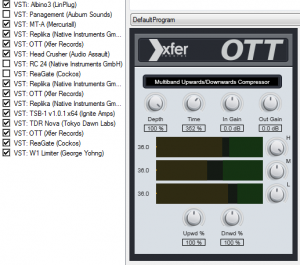
Try this on your transients (yes its a muppet), automating some silence in just before them can really help them stand out more.
You can actually achieve this with a compressor that has lookahead. Pro-C2 is simply incredible for this.Thanks a lot! This is a great idea, I have to try that. I think in Reaper I could even automate it via sidechaining. He says you can't because the sidechain compressor wouldn't duck the signal soon enough, but I believe in reaper I could use an inverted gate or a sidechained compressor that both have a pre-open / pre-comp feature to start ducking before the kick hits.
 ) says. And it removes audible 'clicking' that can occur with heavy sidechaining. (We're talking HEAVY sidechaning... Attack at 0, 18 dB gain reduction or more. Which yes although extreme, is completely within the realm of sanity in aggressive genres of EDM like Drum & Bass...
) says. And it removes audible 'clicking' that can occur with heavy sidechaining. (We're talking HEAVY sidechaning... Attack at 0, 18 dB gain reduction or more. Which yes although extreme, is completely within the realm of sanity in aggressive genres of EDM like Drum & Bass...

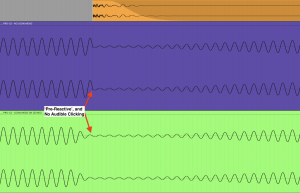
You can actually achieve this with a compressor that has lookahead. Pro-C2 is simply incredible for this.
This also happens to solve two issues that can happen when sidechaning - The ducking is 'pre-reactive' as the puppet () says. And it removes audible 'clicking' that can occur with heavy sidechaining. (We're talking HEAVY sidechaning... Attack at 0, 18 dB gain reduction or more. Which yes although extreme, is completely within the realm of sanity in aggressive genres of EDM like Drum & Bass...
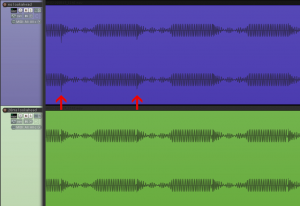
And speaking of that audible clicking... It's actually a lot more destructive than you might think. That click is full-frequency-spectrum and happens on the grid with the kick which causes phasing issues. The phase interference can totally reshape the summed waveform of the kick and sub bass, causing visible phase rotation and an inconsistent low end.
Live's built-in compressor is especially bad for this... I've checked it using scopes, rendering audio, etc... Serious clicking that creates a weak/flabby Kick/Sub combo that can drift and be inconsistent over time... Pro-C2 with lookahead jacked up all the way however slices through sidechaining like a hot knife on butter.
Check out the screenshots below where you can see the result of sidechaining in Pro-C2 with Lookahead off, then Lookahead on.
That's an awesome impression! I think you totally nailed the lowend. When I put the 200hz lowpass filter on it, I would believe it's from the soundtrack if you told me that's where it's from. I think the only thing missing is the highfrenquency sharp transients that I talked about in my previous post to accentuate the bass. You've got clicky stuff in there, but it's not in sync with the low bass synth, and when you put a 200hz highpass filter on it, you can no longer tell when the bass synth plays because it's missing that brrrrzzt sound in the highend that makes the shape of the low sinewaves audible in the higher frequencies.
I couldn't find a second compressor in my collection yet that I could compare against ReaComp, they usually don't go down to 0 ms attack or can't sidechain.

Maybe you could also use something that generates harmonics or an octaver or something? Then saturate only those frequencies
Good idea, will do! You mean something like the R47 (RAT emulation) plugin? Where does it go in the chain, before the amp like an overdrive, or as replacement for the preamp? Combined with overdrive or without?Also, maybe try fuzz on the guitars.
Also, Brainworx bx Subsynth is a great plugin!
If it comes to such applications, Klanghelm DC8C is hard to beat. Just don't forget to turn the saturation off.
The only problem of DC8C is that it doesn't cost much more...
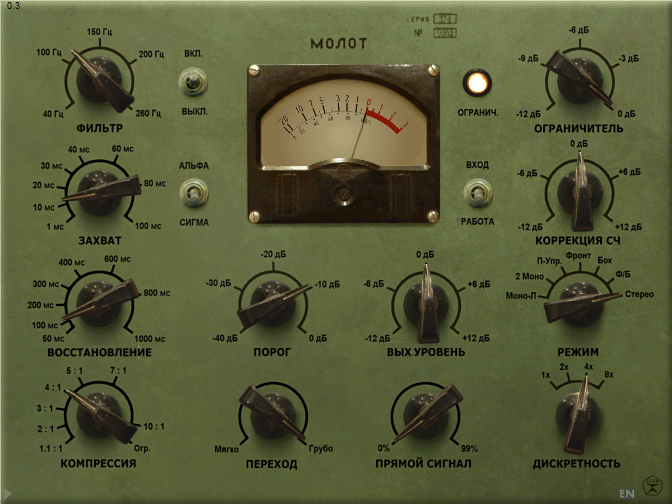
 www.tokyodawn.net
www.tokyodawn.net
Good idea, will do! You mean something like the R47 (RAT emulation) plugin? Where does it go in the chain, before the amp like an overdrive, or as replacement for the preamp? Combined with overdrive or without?

